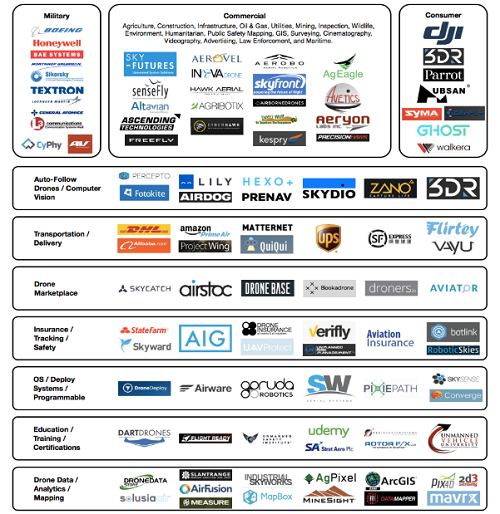By applications, UAVs are classified into military, civil pro and consumer products. Military UAVs target reconnaissance and combat. Civil pro products aim at inspection and geological survey. Consumer UAVs are mainly miniature rotor UAVs which is one type of micro aerial vehicle requiring relatively low level technology. By technologies, UAVs are classified into unmanned helicopter, fixed-wing UAVs, multiple rotor unmanned aircrafts, unmanned airships, and parasail. The first three types are the most widely used.
Because of their unique flying abilities and high definition cameras, UAVs are widely used in aerial photography, film and television, agriculture, monitoring, disaster relief, logistics and other fields.
3. Market volume of UAVs
The global market volume of UAVs, including military and civilian products, has great growth potential. According to statistics, the market volume was around $12.9 billion in 2013 and it is estimated that the global volume will rise to $60.5 billion in 2023, which will be 3.6 times greater than 10 years ago.
According to the Yiguan think-tank, owing to the growing popularity of consumer UAVs, the Chinese market volume of civil products in 2016 will increase significantly. In 2017, as the industry of civil UAV matures and large-scale production is realized, various UAV products will be launched. At the same time, the sales will greatly increase. and in 2018, the market volume will reach 11.09 billion CNY. Consequently, a lot of players take part in this industry due to UAVs' great potential.
4. The eco-system of UAV
The figure below presents the eco-system of the global UAV market. The figure covers all of the UAV markets, including products and companies. As one carrier, UAV facilitates many other functions: tracking shot, UAV transport, security, and education, etc.






